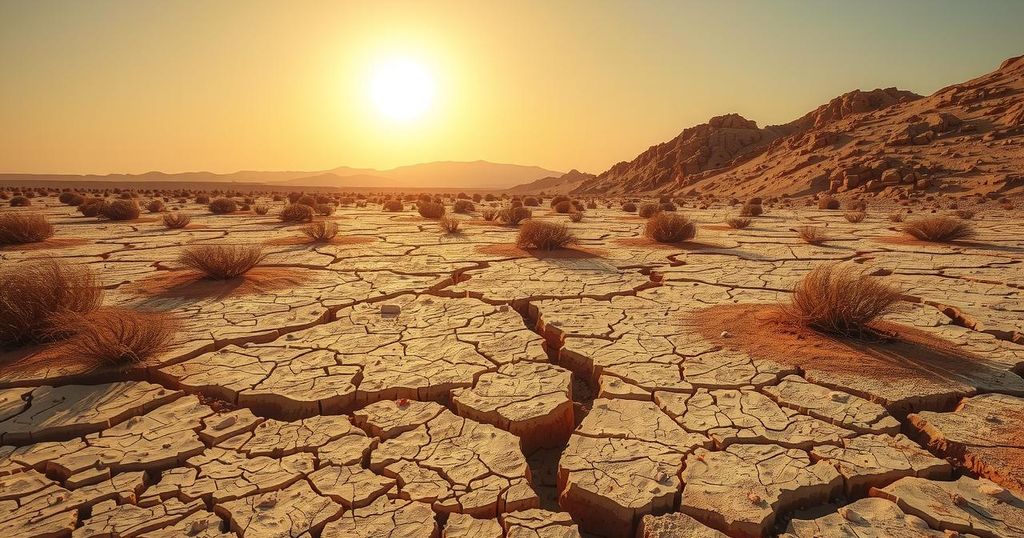Extreme Heat Engulfs Cities Across Pakistan, Temperatures Soar to 49°C

Pakistan is suffering from severe heat, especially in Punjab where temperatures have exceeded 45°C. Bhakkar and Jacobabad hit 49°C. The situation is impacting residents and overwhelming hospitals. The government has issued health advisories and set up measures to provide relief, although the oppressive heat is expected to last several days.
Severe heat continues to grip Pakistan, particularly in Punjab, where temperatures have soared above 45 degrees Celsius in nearly all cities. Bhakkar and Jacobabad in Sindh have recorded the highest at an alarming 49°C. The Pakistan Meteorological Department has warned that this intense heat is likely to persist today, predicting mainly hot and dry weather conditions across much of the country. In its statement, the department also mentioned potential dust-raising winds and isolated rain in select regions later in the day.
The Provincial Disaster Management Authority (PDMA) reported extreme temperatures throughout Punjab, with Sargodha City peaking at 47.8°C. Meanwhile, Gujranwala and Hafizabad hit 47.5°C, while Lahore reached a significant 46.2°C. Only the hill station of Murree offered a respite with a cooler temperature of 32°C. Other regions like Sindh are also suffering, with Jacobabad reaching 49°C and Mohenjo-Daro at 48°C, while Karachi’s humidity made 40°C feel even more unbearable.
Khyber Pakhtunkhwa (KP) also experienced sweltering temperatures of 45-46°C in areas like Peshawar and Dera Ismail Khan. Relatively cooler temperatures were reported in northern mountainous regions, but Balochistan was not spared, as Sibi and Turbat hit 47°C, making life difficult across the province. Residents in Punjab mostly avoided going out during the hottest parts of the day, leaving markets and streets seemingly deserted. “The heat is unbearable. Even standing in the shade feels like being in an oven,” lamented Muhammad Asif, a rickshaw driver in Lahore.
The intense heatwave has also inundated hospitals with cases of heatstroke, leading authorities to establish dedicated counters in state-run hospitals to manage the surge. Most patients have been laborers, the elderly, and children, while power outages across various cities have exacerbated the situation, denying many access to fans or air conditioning.
In response, the National Disaster Management Authority has advised provincial departments to stay alert amidst this ongoing crisis. The Punjab government has set forth measures to combat the severe weather, with Punjab Relief Commissioner Nabil Javed calling on local officials to maintain a high state of readiness. Cool drinking water stations have been established in public areas, transport hubs, and markets, while hospitals are prepared to treat heat-related incidents.
Additionally, authorities have issued health advisories, encouraging residents to stay well-hydrated, limit outdoor activities, and be vigilant for signs of heatstroke, especially among vulnerable populations such as children, the elderly, and those with pre-existing health conditions. People are reminded to dress in light, loose-fitting cotton clothing and remain in shaded or cool environments as much as possible.
The Met office has indicated no imminent relief, predicting the heatwave could continue for another 48 to 72 hours. “This is a life-threatening situation,” warned PDMA DG Irfan Ali Kathia, emphasizing the importance of protecting at-risk groups appropriately.
In summary, Pakistan is enduring an extreme heatwave, particularly affecting Punjab, with temperatures soaring above 45 degrees Celsius in multiple cities. Hospitals are overwhelmed with heatstroke cases, heightening concerns among authorities. Measures have been taken to provide relief, yet the heat is expected to persist for several more days, calling on the public to take precautions and the government to remain vigilant in its response.
Original Source: asianews.network







